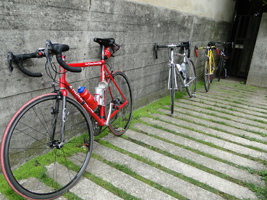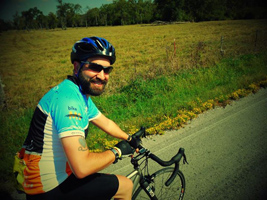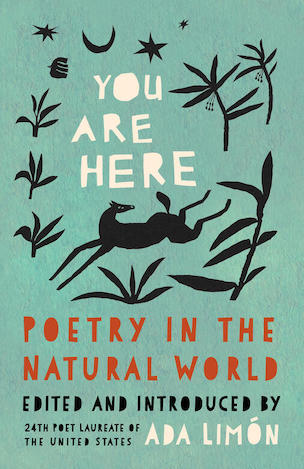Two Wheels and the Truth
What if, instead of cyclists, drivers saw people on bikes?
Knowing I’d be holding baby Sophia in a few short miles made the strenuous, blind-curve, no-shoulder climb going north over Backbone Ridge that much easier. It’s never been entirely easy. I remember the first time I tried to do it, five years ago. I couldn’t. I stopped halfway up and sat on a guardrail, gasping for air, my chest tight. But that was before I was diagnosed with asthma, back when I thought sixteen years of smoking had done irreparable damage to my lungs. Now, cigarettes years behind me, asthma in check, and my lungs and legs healthier and stronger, I take bigger breaths, climb in larger gears on larger hills, and, on this occasion, think about holding babies.
 The chilly spring was fading, which made my ride from the Belle Meade area of Nashville southeast to the town center of Franklin perfect for my customary mid-ride mocha at the coffee shop. Most area cyclists know a good part of this route. The stretch of Old Natchez Trace along the Harpeth River, although peaceful and pastoral, can be miserable on a bike, because the city of Franklin or the county of Williamson or whoever is responsible for these things can’t seem to get around to paving it. But it dumps you out onto Del Rio Pike, which is straightway flat heaven. You zip by horses and cows—cows tend to follow you with their heads—and old farms and big houses. I grew up in the city and have no idea why this is so pleasant to me. Come to think of it, I didn’t grow up an athlete either and have no idea why I’ve taken so hard to wearing really tight and colorful spandex clothing while riding a bicycle that is worth more than my car. (Which doesn’t necessarily mean anything: I own a 2001 Suzuki Esteem with almost 100,000 miles on it.) But that’s as it should be, as my bike-riding friends remind me.
The chilly spring was fading, which made my ride from the Belle Meade area of Nashville southeast to the town center of Franklin perfect for my customary mid-ride mocha at the coffee shop. Most area cyclists know a good part of this route. The stretch of Old Natchez Trace along the Harpeth River, although peaceful and pastoral, can be miserable on a bike, because the city of Franklin or the county of Williamson or whoever is responsible for these things can’t seem to get around to paving it. But it dumps you out onto Del Rio Pike, which is straightway flat heaven. You zip by horses and cows—cows tend to follow you with their heads—and old farms and big houses. I grew up in the city and have no idea why this is so pleasant to me. Come to think of it, I didn’t grow up an athlete either and have no idea why I’ve taken so hard to wearing really tight and colorful spandex clothing while riding a bicycle that is worth more than my car. (Which doesn’t necessarily mean anything: I own a 2001 Suzuki Esteem with almost 100,000 miles on it.) But that’s as it should be, as my bike-riding friends remind me.
Sophia’s dad, my close friend Thomas, had texted me mid-mocha to ask if I still wanted the beat-up, in-need-of-serious-restoration, ’50s dinette set he had been holding for me. I didn’t. You know how you think you’re a certain kind of person who likes a certain kind of thing, but then you get to a certain age and have to accept that maybe you are not that person? I used to think I was a ’50s dinette kind of person. I’m not. Or I’m not anymore. But then Thomas asked if I wanted to stop by anyway to see him and Becki and Sophia. Of course I did.
The dinette set, along with a barrage of other things Thomas and Becki didn’t know what to do with, was outside the garage. Inside with her parents was Sophia, ten months old, a little groggy from her nap and willing to be held by a sweaty, forty-one-year-old bearded man in bike shorts. And so we hung out a bit, bouncing around and watching Thomas and Becki move things from one place to another. “What are they doing?” she seemed to be asking me. “They don’t know,” I replied.
I was on a high when I left them to ride down Highway 100 back home. A good portion of the road, from the northern terminus of the Natchez Trace Parkway going east to Edwin Warner Park, has a soft shoulder ribbed with rumble strips. You can ride the thin space between the strips and the embankment, but it’s not safe. There’s scattered debris and garbage containers and opened mailboxes. It’s a white-knuckled balancing act the whole way. Better to ride on the road, hugging the white line to the right.
 I felt the white pickup truck creep up next to me, terribly close, and knew something bad was about to happen. He began to lean in, to direct the front of the truck toward the shoulder to force me off me the road. He pushed me on to the rumble strips, the bike shaking my body and chattering my jaw. I hopped to the right onto the space before the embankment, panicking and trying to steady myself. As he lurched forward, he pointed to the right to say, “Get over to the right,” and sped off. I was furious. And scared. I never caught his license plate.
I felt the white pickup truck creep up next to me, terribly close, and knew something bad was about to happen. He began to lean in, to direct the front of the truck toward the shoulder to force me off me the road. He pushed me on to the rumble strips, the bike shaking my body and chattering my jaw. I hopped to the right onto the space before the embankment, panicking and trying to steady myself. As he lurched forward, he pointed to the right to say, “Get over to the right,” and sped off. I was furious. And scared. I never caught his license plate.
I stayed off Highway 100 for the next couple of weeks. I’ve had people yell out the window at me, buzz me, and, on one occasion, toss water out of a car. But never that. Never someone trying to kill me. It was the beginning of the cycling season, and I was jarred and shaken. I started mapping out alternative routes to the Natchez Trace Parkway. To Franklin. To Sophia.
A few weeks later, my writing group did an exercise that called for us to write briefly about something we had experienced that signaled the beginning of summer: no descriptions, no reflections, no color, no texture. Just the facts. So I jotted down a couple of sentences about the guy in the pickup truck who had tried to kill me. The second part of the exercise was to go back and fill in the details. To bring those facts to life and tell a story. I wrote about the temperature. The mocha. The ridge. The climbing. I wrote about Sophia. By the time the exercise ended, I hadn’t even gotten to the guy.
And maybe the guy hadn’t gotten to me.
Faced with fleshing out the facts, I didn’t immediately go to the guy who tried to run me off the road. I went to the baby who got me over the ridge. As I wrote, what I remembered of that day was not the fear that was still, to that very moment, gripping me. I remembered the warmth, and the innocence that inspired me.
If that guy in the pickup truck is out there, maybe he’ll read this essay and no longer see a cyclist on the road slowing him down, but a person. A person compelled to take big breaths to rebuild his lungs and climb big hills to challenge himself. A person enjoying a sunny day and a cup of coffee. A person with friends and family who looks forward to holding a baby in his arms. Maybe a person like him. Only on a bike.
Copyright (c) 2014 by Joe Pagetta. All rights reserved.


